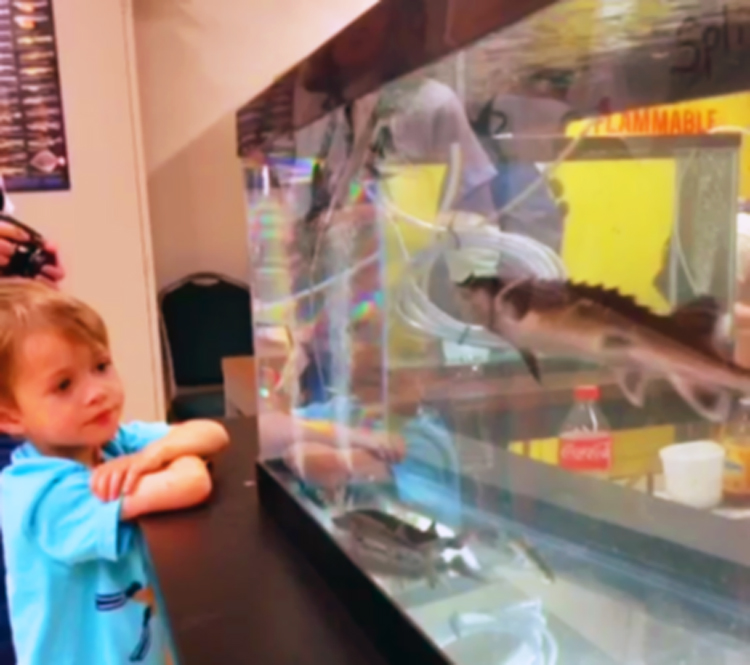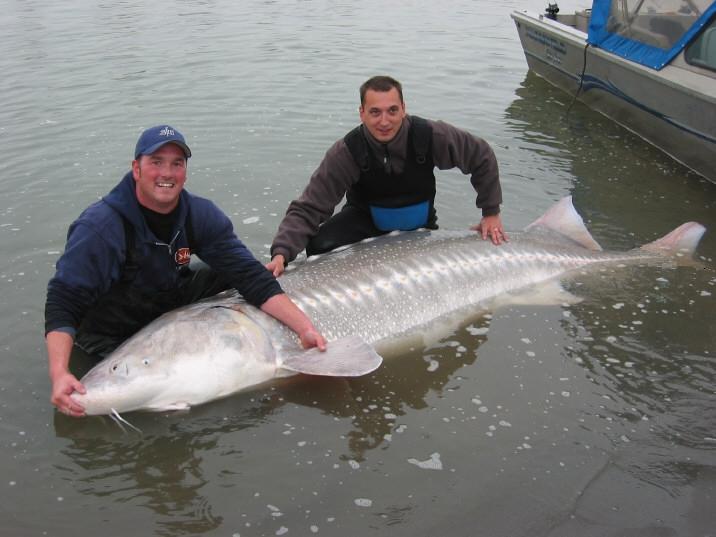
A scene from the California fishes exhibit at the 2014 Picnic Day at University of California, Davis. (Image Credit: Ben Young Landis)
What simplicity and gentleness this scene sings.
As children, we are often told that we have outgrown something. A toy or a book that is no longer suitable, because we are too old for that thing. A shirt or skirt that no longer fits, because we simply have grown in size. We are then asked to fit ourselves into new shapes and new frames — in our heart and in our form, in our words and in our ways.
But not here. Not this boy. Safety, food, and shelter aside, the child has no expectations of the world around him — he simply observes the nature of things around him, and places himself intuitively before that context. This laboratory bench is built for adults to sit at, but the child sees the bench, and noting its height in relation to him, instinctively places and rests his arms upon the bench, as if the bench had always been designed for that purpose, and for his very body.
The fish intrigue him, but not because someone ordered him to do so. It is a simple response: I do not know this creature. It appears to be not harmful. I wish to observe the creature more closely.
Unimpeded by others and their opinions, he does so.
Certainly, there are many facts about these white sturgeon (Acipenser transmontanus) that might further fascinate the boy. The otherworldly vacuum-tube jaws they use to suck and sift prey from the mud bottom. That a female white sturgeon can release 100,000 to 3,000,000 eggs at each spawning. That like humans, white sturgeon begin to mature in their teenage years — and they are known to reach 100 years in age.
But the child, by his nature, is curious. The form and shape and liveliness of the sturgeon are sufficient to draw his gaze. What are they? What are those spikes on its back? Why does it have whiskers?
That is the unpolluted response. It is ugly — an adult nearby might whisper, and the innocence breaks. We do not look at ugly things.
Unconstrained, and with sufficient time, the sturgeon may attain a length of 6 meters (20 feet). Unconstrained, and with sufficient time, we may yet learn to unlearn the rigor and rules of adulthood, and remember the childhood instincts we have so outgrown. To simply take the world in, and to place our arms at rest at whatever ledge or moment that Nature presents to us.
To gaze, to be at peace, and to be curious — if only for a brief scene.
Acipenser transmontanus Richardson, 1836
White Sturgeon
Click for name etymology (ETYFish Project)
Click for names in other languages (FishBase)
Class Actinopterygii (Ray-finned Fishes)
Order Acipenseriformes (Sturgeons and Paddlefishes)
Family Acipenseridae (Sturgeons)
FishBase Page: http://www.fishbase.org/summary/2594
— Ben Young Landis
